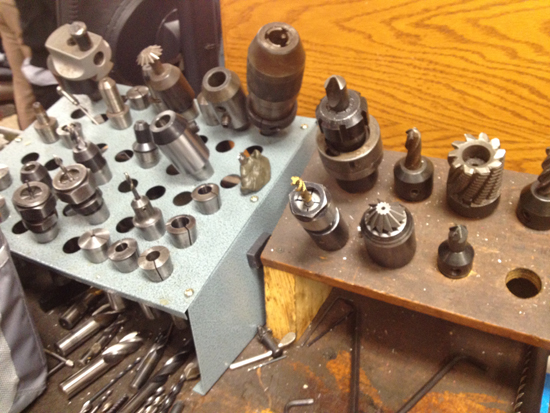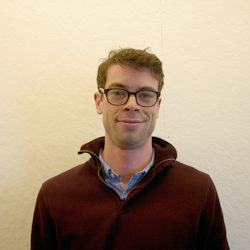
Last week PAYETTE’s Young Designer Core (YDC) visited the headquarters of TriPyramid, an architectural hardware firm located in Westford, MA and known for their work on Apple Stores. Upon arrival at the unassuming Tudor style warehouse we heard an insightful presentation on the history and current work of the firm. Jeff Anderson, an architecturally trained project manager, and Tim Eliassen, the founder, led the presentation. Tim transferred his expertise in sailboat rigging to the realm of curtain wall hardware. The business began with an enviable first commission, that of the Louvre pyramid, and has continued to innovate in the areas of curtain wall structure and hardware to this day. At the heart of this innovation is a collaborative digital design process, which allows for project specific solutions to complex constructions.
By focusing on three projects, a cantilevered stair, a luminous grid shell, and a cable-net light well for Fulton Transit Center, Jeff led us through TriPyramid’s workflow — from collaboration with designers and engineers, through fabrication and installation. Both Tim and Jeff were conscious of the precision necessary with using glass in a structural manner and advocated for parametric computation and intelligent processes to mitigate inaccuracy during collaboration and ensure ease of installation. This line of inquiry is particularly appealing to me as my graduate thesis used computational form finding as a way to explore lightweight structural systems such as cable-nets, gridshells and tensegrity structures. Through the presentation Jeff hit two topics that are hugely important to this work. The first topic is locking nodes in place for actively designed rigid structures. TriPyramid accomplished this for James Carpenter’s hanging glass flag through a flush network of moment connections and stiff armatures. To accomplish this, precision is required to find the angles of incidence between each node and its neighbors, and the accuracy needed is almost absurd. The second topic deals with locating nodes in space for catenary forms where angles will find themselves. Tim and Jeff discussed this through the Fulton Transit project, which required a rearrangement of their fabrication space to translate information generated from the digital model into physical locations along a 50’ cable. The presentation provided insight into what would have been the next step in my scholastic research, but also shed light on what is available at the high end of the building fabrication market.
The presentation was followed by a tour of the production facilities with Tim and Jeff. The fabrication shop is an interesting mix of low-tech, human operated machining tools and state of the art CNC technology. One tool that generated considerable envy was a rotating bed CNC mill, which allowed for 5-axis control directly from 3D digital models. The fabrication space was surprisingly flexible, and had to be, as the firm’s pursuit of custom work required innovative fabrication equipment and layouts. One such example was a track mounted laser locator that ran the full length of the fabrication shop. The equipment was developed specifically for the Fulton cable-net, and is indicative of the innovation TriPyramid undertakes to produce such precise custom assemblies. While it would be easy to harp only on functionality, Tim and Jeff spoke at length about the aesthetics of the machining process and the importance of hand finishing every piece that leaves their shop. Glass assemblies are designed to disappear, drawing attention to the opaque hardware and creating greater importance for that hardware to be clean, striking and highly functional. TriPyramid’s understanding of this is the key to their success.


